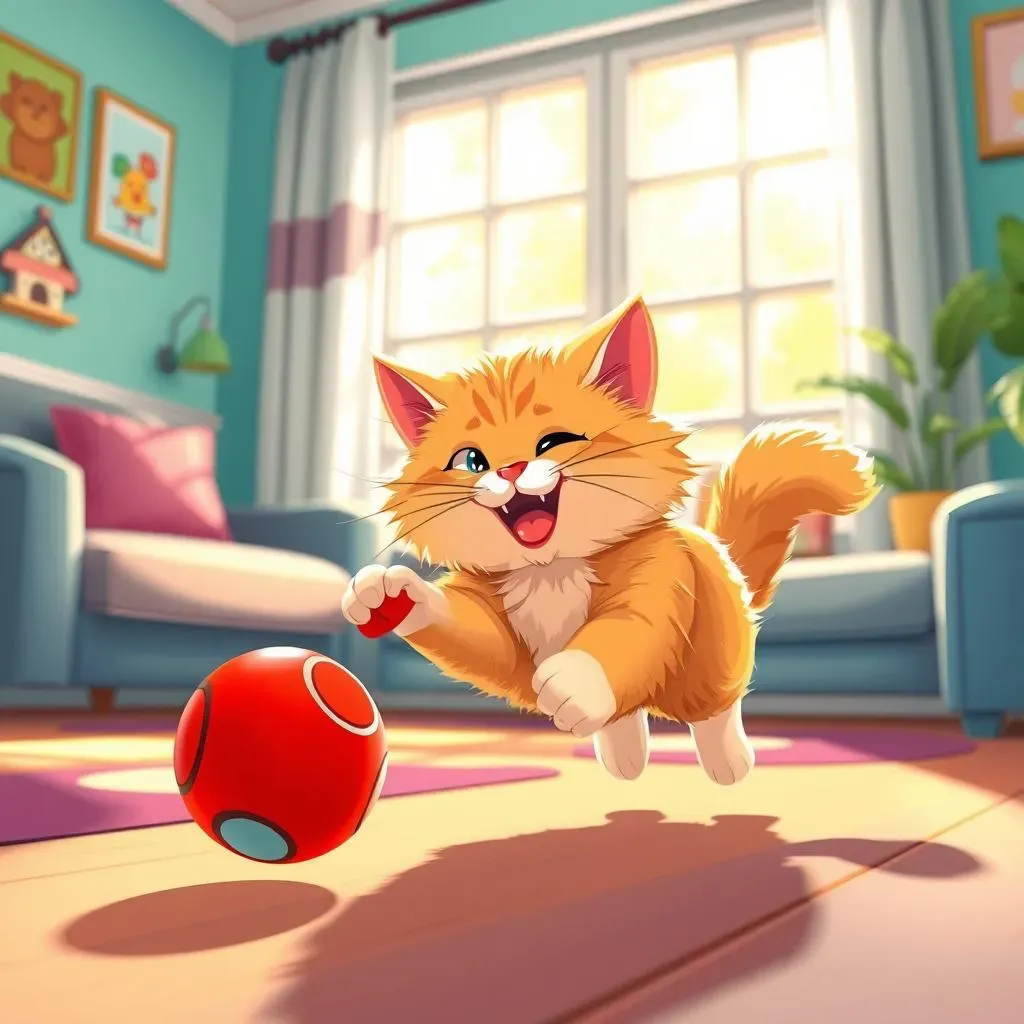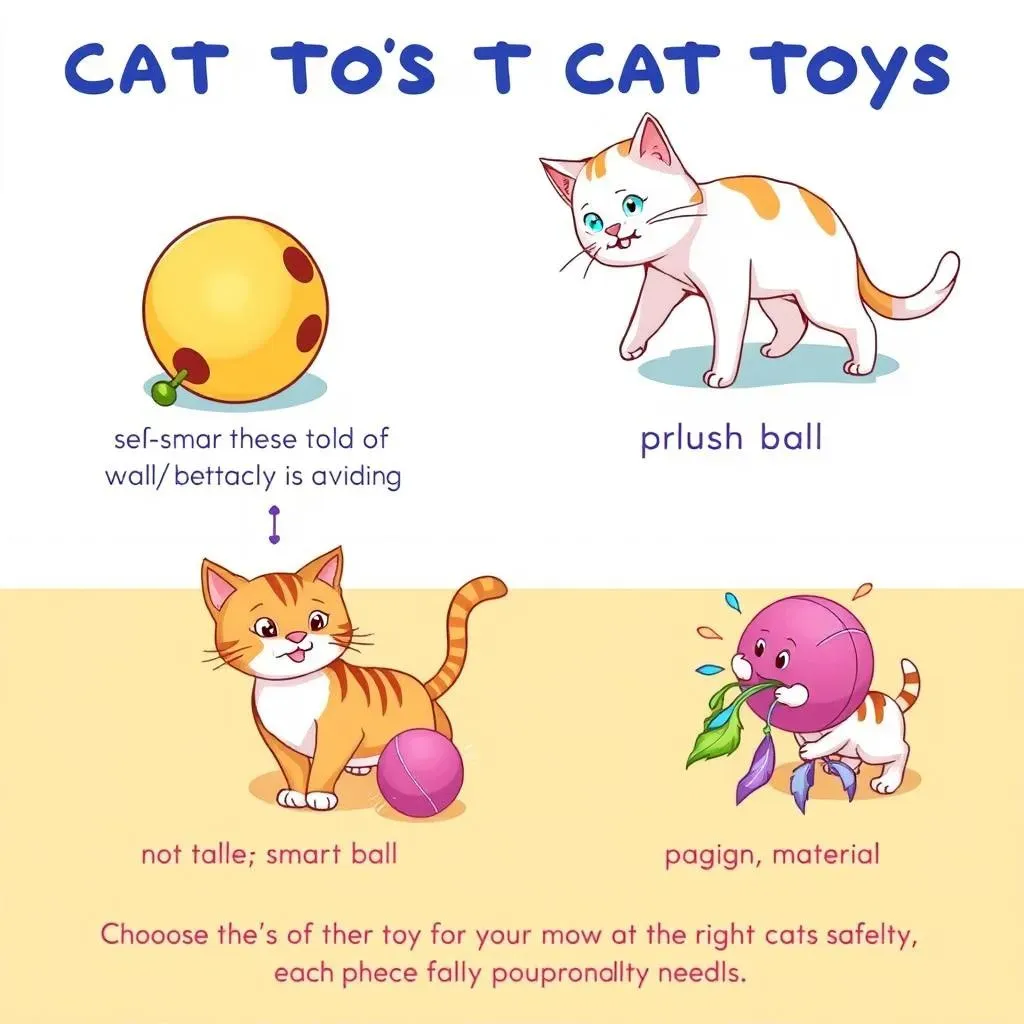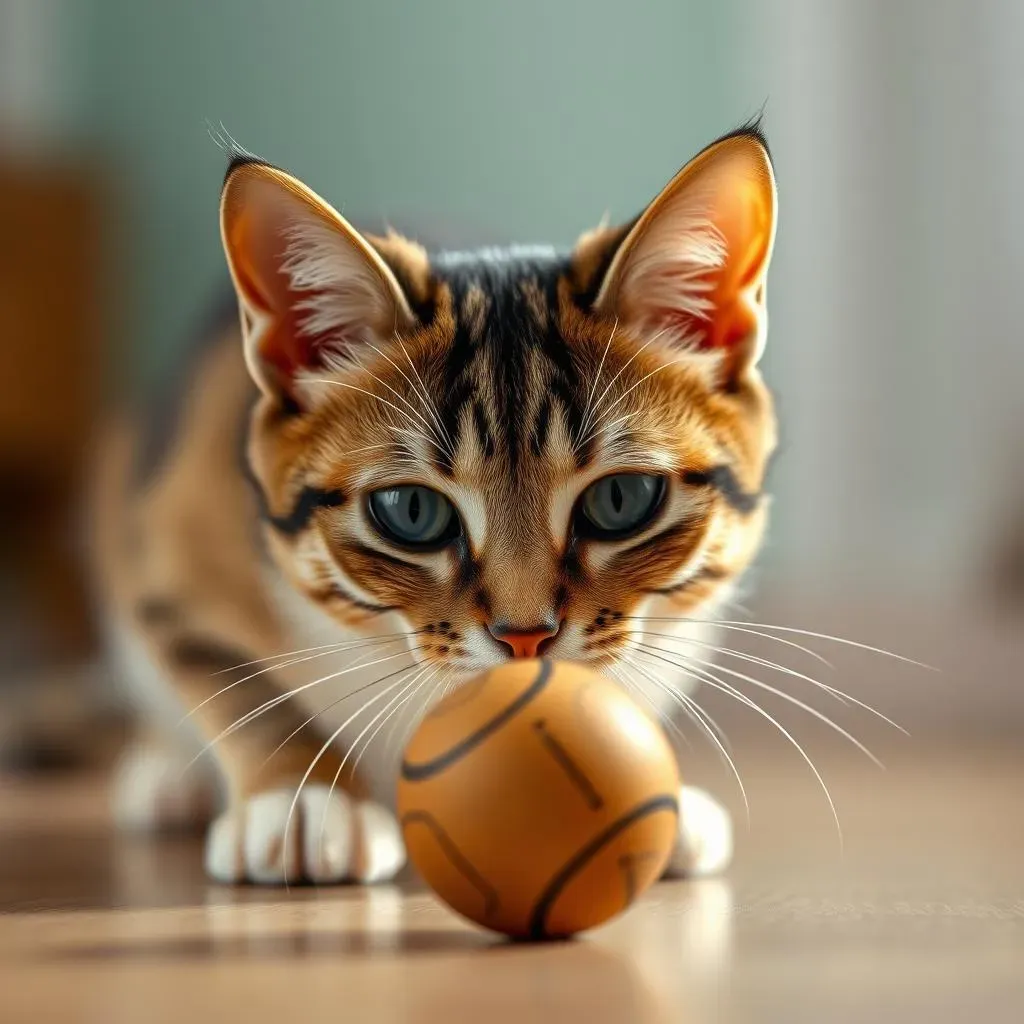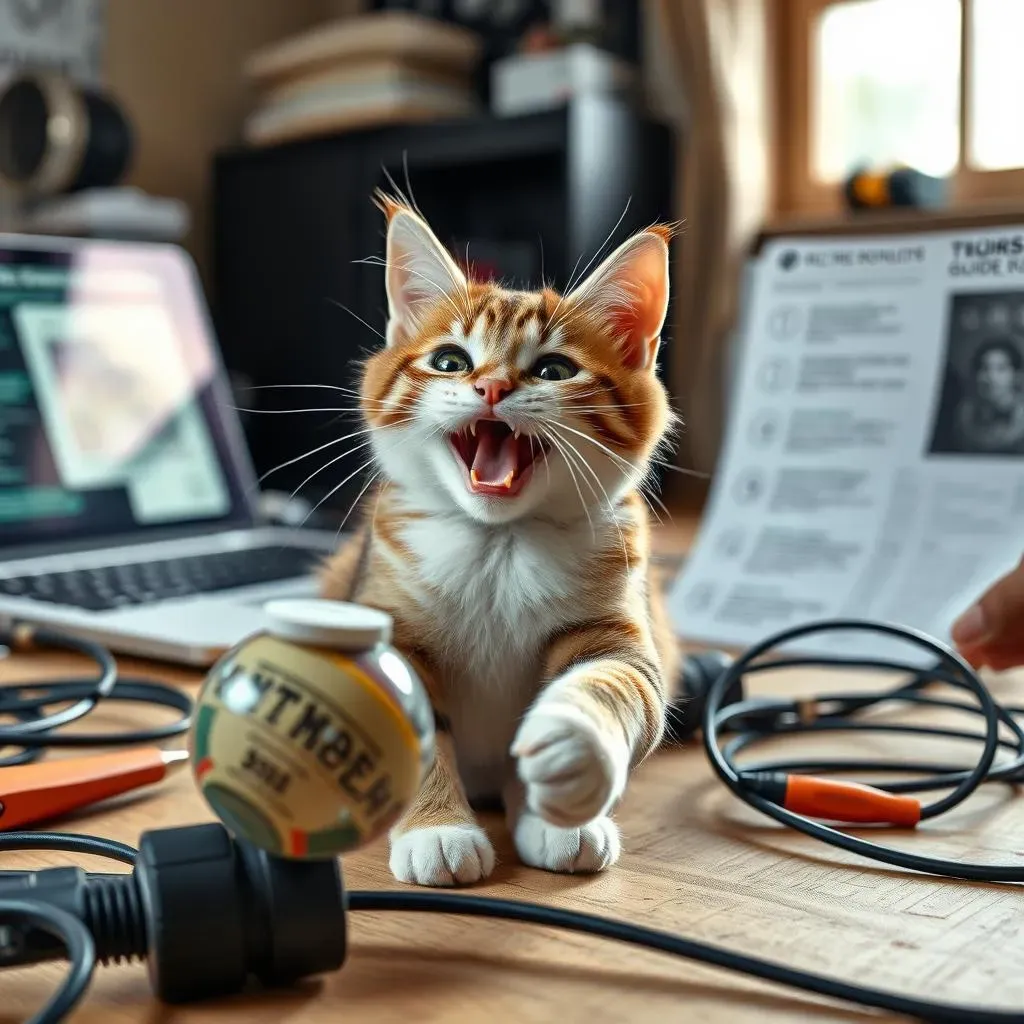Table of Contents
Ever watched your cat stare blankly at a wall, a tiny lion trapped in a world of beige? I have. It's like they're saying, "Entertain me, human, or I shall nap... again." That's where the magic of a "cat toy moving ball" comes in. These aren't just any toys; they're tiny, motorized chaos-bringers designed to unleash your cat’s inner hunter. Forget the boring old feather wand – we're talking about self-propelled spheres of joy that bounce, roll, and sometimes even light up, making them utterly irresistible to our feline overlords. This article will guide you through the wonderful world of these moving marvels. We'll explore why your cat craves the chase, how to pick the perfect ball for your furry friend, and even give you some tips on introducing it successfully. Plus, we'll tackle some common problems you might face, because let's be honest, even the best toys can sometimes go rogue. So, buckle up, cat lovers, it's time to elevate playtime!
Why Your Cat Needs a Moving Ball Toy

Why Your Cat Needs a Moving Ball Toy
Okay, so you're wondering why your cat *needs* a moving ball toy, right? It's not just about spoiling them (though, let's be honest, we all do). Think of it like this: your cat is a finely tuned predator, even if their biggest hunt of the day is that dust bunny under the couch. They have an instinct to stalk, chase, and pounce. Now, indoor cats often miss out on these natural activities, which can lead to boredom, weight gain, and even some naughty behaviors. A moving ball toy provides a safe and engaging way for them to satisfy these instincts. It's like giving them a tiny, unpredictable prey that they can chase around the living room, keeping them physically active and mentally stimulated. Trust me, a happy, engaged cat is far less likely to decide your curtains are a better climbing option.
Plus, these toys aren't just about burning off energy. They can also help reduce stress and anxiety. Think of it as a little cat therapy session, but instead of a couch, there's a rapidly moving object. The unpredictable movement of the ball keeps their attention, encouraging them to focus and release pent-up energy. It's like a puzzle they can interact with physically, which can be incredibly enriching. And let’s not forget the pure entertainment value. Watching your cat go full hunter mode as they chase a tiny ball is endlessly amusing, isn't it? It's a win-win situation: your cat gets to unleash their inner tiger, and you get some quality entertainment.
Benefit | Description |
|---|---|
Physical Activity | Encourages exercise and prevents weight gain. |
Mental Stimulation | Keeps cats engaged and reduces boredom. |
Stress Reduction | Provides an outlet for energy and reduces anxiety. |
Natural Instincts | Satisfies the cat's hunting and chasing instincts. |
Choosing the Right Cat Toy Moving Ball

Choosing the Right Cat Toy Moving Ball
Considering Your Cat's Personality
Okay, so you're ready to dive into the world of moving cat balls. First, think about your cat's unique quirks. Is your feline friend a high-energy hunter who loves a good chase, or a more laid-back observer who prefers a gentle game? For the zoomie-prone kitty, you'll want a ball that can keep up – think fast speeds and unpredictable movements. On the other hand, a more cautious cat might prefer a ball that rolls more slowly and predictably, allowing them to stalk and pounce without being overwhelmed. It's kind of like picking a video game; you wouldn't give a beginner gamer the hardest level right away, would you? Same goes for our feline pals.
Don't forget to consider your cat's age and physical condition, too. A senior cat might not be as agile as a kitten, so a gentler, slower-moving ball will be more appropriate. And if your cat has any joint issues, you'll need a ball that's lightweight and easy to bat around. It's all about finding that perfect balance between engaging and manageable.
Types of Moving Balls
Now, let's talk about the different types of moving balls out there. You've got your basic self-rolling balls, which are usually battery-powered and move around on their own. Then, you've got the more advanced options that include features like obstacle avoidance, different speed settings, and even built-in lights or sounds. Some balls are made of hard plastic, while others are covered in soft, plush material. This is important, some cats love to bite and chew so having a durable ball is a must. It’s like deciding between a basic car and a sports car – both will get you from A to B, but one is a lot more fun.
Also, consider the material of the ball. Hard plastic balls are easy to clean but might be noisy on hard floors, while soft balls might be more appealing to your cat but could be easier to damage. Some balls even have features like feathers or dangling toys attached, which can add an extra layer of interest for your cat. It's all about finding what sparks their curiosity.
- Self-Rolling Balls: Basic, battery-powered, moves on its own.
- Smart Balls: Offer features like obstacle avoidance, various modes and speeds.
- Plush Balls: Soft, gentle, good for sensitive cats.
- Balls with Attachments: Feature feathers or dangling toys for added interest.
Size and Safety
Finally, let's talk about size and safety. You want to pick a ball that's big enough that your cat can't swallow it, but not so big that it's difficult for them to bat around. A good rule of thumb is to choose a ball that's about the size of a ping pong ball or a little larger. Also, make sure the ball is made of non-toxic materials and doesn't have any small parts that could break off and be a choking hazard. It's just like baby-proofing, but for cats.
And when it comes to safety, always supervise your cat during playtime, especially when they're first getting used to a new toy. This will help you spot any potential problems and ensure that they're having a fun and safe experience. Remember, a good toy is one that not only entertains your cat but also keeps them safe and sound. So, choose wisely, fellow cat enthusiast!
How to Introduce a Moving Ball Cat Toy

How to Introduce a Moving Ball Cat Toy
The Gentle Approach
Alright, so you've got your paws on a shiny new moving ball toy, but hold your horses, don't just unleash it on your unsuspecting feline just yet! Cats, as we know, are creatures of habit, and sudden changes can be met with suspicion, or worse, indifference. The key here is to introduce the toy slowly and gently. Start by simply placing the ball in their environment, without turning it on. Let them sniff it, bat it around a bit, and get used to its presence. Think of it like introducing a new roommate – you wouldn't just throw them into the deep end, would you? Give your cat time to adjust to this new object in their territory, and don't force them to interact with it if they're not ready. Patience is key, my friend.
Once they seem comfortable with the ball's existence, you can try turning it on in a quiet area, away from their main hangouts. Observe their reaction carefully. Are they curious, scared, or completely uninterested? If they seem hesitant, try turning it off and on briefly, letting them see that it isn't some scary monster. Some cats are instantly drawn to the movement, while others need a little more encouragement. The goal here is to create positive associations, so they see the moving ball as a fun and engaging thing, not a source of stress or anxiety.
Making it Fun and Engaging
Now that your cat is at least aware of the moving ball, let’s make this thing fun! Instead of just letting it roam free, try using it to initiate play sessions. Start by rolling the ball gently, then let your cat chase it and bat it around. This helps them understand that this moving object is meant for play. You can even add some extra encouragement by using a feather wand or laser pointer to get them excited. It's like a little cat version of a treasure hunt, and it's really fun to watch them get into it. Remember to keep these play sessions short at first, especially if your cat is a senior or has any health issues. We want to build their enthusiasm, not tire them out too quickly.
Another trick is to use treats or catnip to create positive reinforcement. When your cat interacts with the moving ball, reward them with a treat or a sprinkle of catnip. This helps them associate the toy with something good, making them more likely to play with it again in the future. And, of course, always supervise your cat during playtime, especially when they're first getting used to the toy. This way, you can make sure they're playing safely and having a blast with their new moving buddy. Remember, it’s all about making playtime a positive and enjoyable experience for your feline friend.
Step | Action |
|---|---|
1 | Introduce the ball without turning it on. |
2 | Turn it on briefly in a quiet area. |
3 | Use it to initiate play sessions. |
4 | Reward interaction with treats or catnip. |
Troubleshooting Common Issues with Cat Toy Moving Ball

Troubleshooting Common Issues with Cat Toy Moving Ball
Okay, so you've got the purrfect moving ball, but what happens when things go a little sideways? Don't worry, it's not uncommon to run into a few snags. One of the most frequent issues is a cat who just isn't interested. Sometimes it's because the ball is too fast, too noisy, or just not their style. If that happens, try a different type of ball, maybe one that's softer or moves more slowly. It's like trying to find the right TV show; sometimes you have to flip through a few channels before you find something that grabs your attention. Another common problem is the ball getting stuck under furniture. It's a cat toy, yes, but it’s also a master of hide-and-seek, often in the most inconvenient places.
Battery life is another issue that pops up regularly. It’s super frustrating when the fun stops because the ball decided to take a nap. Always make sure to charge your toy fully before playtime. And let's not forget the occasional technical hiccup, maybe the ball is not moving correctly. Sometimes it just needs a good reset or a quick check of the battery compartment. It's like a tiny robot that needs a little TLC every now and then. And, of course, some cats are just rough players, and you might find that the moving ball has broken down after a few plays. When that happens, checking the warranty is your best bet. Don't give up hope yet; troubleshooting is just part of the journey of being a cat parent!
Issue | Possible Solution |
|---|---|
Cat is uninterested | Try a different type of ball, softer or slower. |
Ball gets stuck | Clear obstacles or use a ball with obstacle avoidance. |
Short battery life | Charge fully and check for battery issues. |
Ball is broken | Check warranty and consider a replacement. |
Now, let’s talk about some of the more specific issues you might come across. Sometimes, a cat might be too scared of the moving ball, especially if it’s noisy or moves erratically. In this case, try introducing it slowly, as we discussed earlier, and maybe start with a gentler, less unpredictable setting. It's like introducing a new food; you wouldn't force-feed it to them, would you? You'd let them try a little bit at a time. Another common problem is when the ball stops working after a while. This could be due to a dead battery, a loose connection, or even a broken motor. Always check the basics first – make sure it's charged, and the battery compartment is secure. If all else fails, try contacting the manufacturer; they might have some specific troubleshooting tips for their model.
And finally, let's not forget about the occasional cat who’s just too rough with their toys. Some cats are like tiny wrecking balls, and they might try to bite, chew, or even dismantle the moving ball. If this is your cat, try choosing a more durable ball that can withstand some rough handling. And always supervise playtime to make sure they don’t swallow any small parts. It's all about finding the right balance between fun and safety. Remember, a little patience and a lot of observation can go a long way in making playtime enjoyable for both you and your feline friend. After all, isn't that what it's all about?